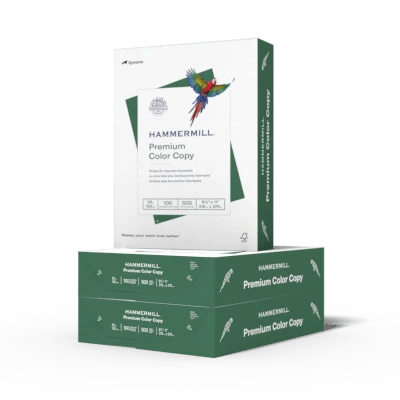
How to write a good business proposal
Make more of your business opportunities by writing compelling proposals.

Writing Your Proposal
A proposal is a path to growing and solidifying a business relationship. Writing a good proposal takes time, patience, and above all, thought. But before we begin, there are a few basic stylistic points to keep in mind:
i) It’s Not About You
Even though a proposal entails talking about your company and how you can help the client, the emphasis should ALWAYS be on them. What are their needs, their goals, and how can you help the client achieve them?
ii) Keep it Short
Time is precious. Don’t waste yours or the client’s by spewing boilerplate language about your process or your company’s history, etc. If they want to know, they’ll ask. Make sure every sentence is working hard. Make your points and stop there.
iii) Be Honest
Don’t promise the moon until it’s yours to promise. Business relationships are built on trust. Earn your client’s trust by being open, honest and clear about what you can do for them. Then live up to your words.
iv) Check, check and check again
Typos are embarrassing. Wrong dates, numbers, or names can be a disaster, so take the time to proofread your work. If you can, get someone else to read through your proposal for you to confirm it makes sense and to check for any errors.
How To Do It
1 — Give Yourself Time to Think
No one has any time. Especially if you’re good at what you do. But simply answering the client’s questions and/or providing the information they request sells both you and the client short.
Give yourself time to think their situation through.
Many proposals meet with indifference because they begin and end with the client’s request. Sometimes a client knows exactly what they want to do and how they want to do it. They just want to know how much it will cost and how long it will take. Even then, a better idea is usually welcome.
But much more often, the client is trying to solve a business issue, and they are looking to you for a solution. They may have some idea of what could work, but they only know what they know. Do you have experience, knowledge or insight that can get them to a better solution? Are they asking the right questions to solve their problem? You have the benefit of an outside perspective. Does that help you see their business issues more clearly or at least from a different perspective?
2 — Identify the Business Issue
Your proposal needs to present a solution to a business problem. Sometimes a client’s request states the issue clearly. Other times the request doesn’t provide you with a clear understanding of the business issue the client is trying to address. Sometimes you can figure it out, but usually it’s better to…
3 — Ask Questions
What do you need to know to identify the business issue and solve the problem? Begin by reviewing what you know of the client’s situation. Then determine the things you need to know to: 1) understand the business need clearly, and 2) construct an effective solution.
Don’t be afraid to ask questions. Every situation is different, even if it looks familiar at first. If you don’t know what the business need is, your solution won’t help them
4 — Leverage Your Existing Relationships
How did the client hear about you? Do you know someone who works there or does business with them? What can your contact tell you that can help you understand the client, their business issues and what they have done in the past to try to address those issues?
5 — Begin Writing: Point A
Provide a summary overview of your understanding of their request and the underlying business issue the request is meant to address. Think of this paragraph as the You Are Here marker on a map. This is point A.
6 — Goals: Point B
What are the client’s goals? What is the client asking you to help them achieve? Think of this as the Destination; it’s where the client wants to go. This is Point B.
7 — Plan: Getting from Point A to Point B
What are the steps to take the client from Point A to Point B? There could be more than one route. Is your process the same regardless of your solution or does it vary according to the goal? Do you need to provide the client with options? If so, be sure to specify the benefits and limitations of each option so that they can make an informed decision.
A short, informative, emotionally appealing approach encourages a dialogue. Give them what they need to come to you with questions.
8 — From Soup to Nuts and Bolts
From start to finish present the process of your proposed solution. Create a schedule, or estimated timeline, and specify the costs (or range of costs) of each element of your solution. It may make sense to provide a couple of different approaches, from the Bare Bones/Necessity approach to the Do It Right approach. Or you can present the different phases of your work and the different options in an A La Carte fashion so that they can construct an approach that meets their timing and budgetary constraints.
9 — Show it Will Work
Present your capabilities so that they align with your proposed solution. Prove that you can help the client reach their goals. Where possible detail expected outcomes and proof points so that they will be able to see whether the solution is working, what parts of it are working best and what you can do together to improve it.
Don’t spend a lot of time on capabilities you have that they don’t need. Keep it short, focused on the client’s needs, and to the point.
Case studies can help prove your points if the business challenges they address are similar. Good case studies are compelling: put them in an Appendix so the client can read them later if they are interested.
10 — Think Forward
What will the future look like? What benefits will your proposed solution provide now and down the track? Don’t be afraid to show your excitement here. This is your conclusion and it should get the client excited to work with you.
11 — Executive Summary
Now that your Proposal is nearly complete, review it carefully. Then create a summary that is between 1/2 and 3/4 of a page long. Boil points 5 – 10 down to one clear sentence each, if possible. Put this Summary at the front of your proposal. If all the client cares about is numbers, don’t make them search to find them. If the client is looking for a partner and a solution to their business issue they will still appreciate your effort to make your case clearly.
Your project's perfect paper
You May Also Like
-

Lesson plan template
View Activity -

Classroom activities
View Activity -

Back-to-school kit for teachers
View Activity
